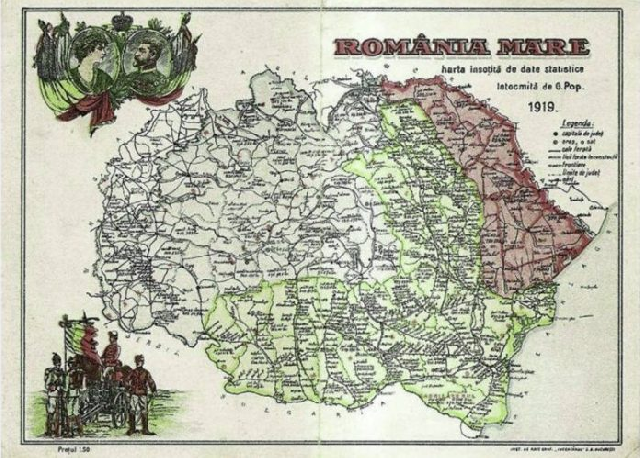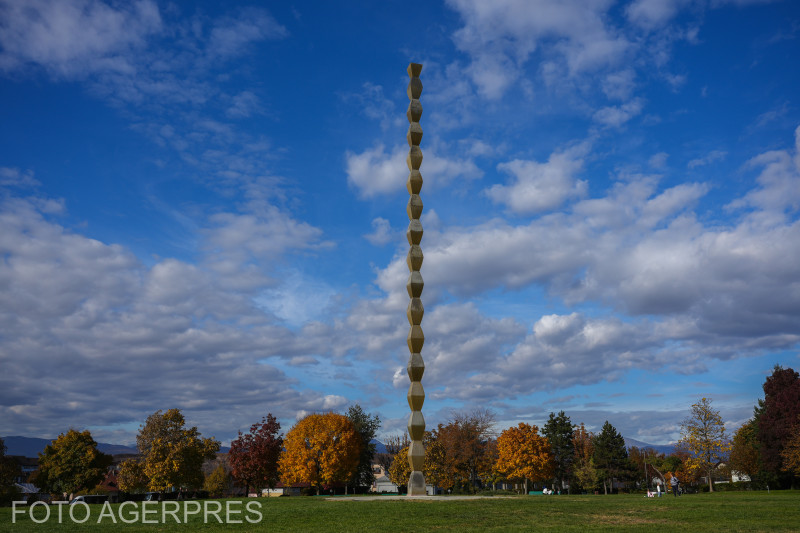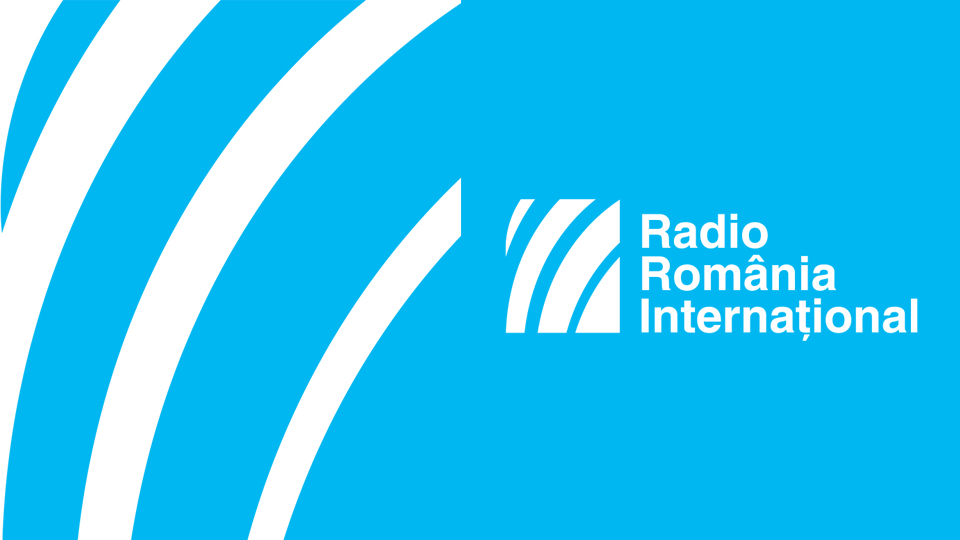The Year 1918 and the New Romania
The Great Union of 1918, revisited

Steliu Lambru, 04.12.2023, 14:47
In order to understand the changes
in borders and state structures that the year 1918 brought to the map of
Europe, two realities, one physical and the other utopian, must be considered.
The first was that of World War I, with over 20 million military and civilian
deaths and approximately 23 million wounded. The two opposing military blocs,
the Entente, consisting of France, Great Britain, Russia, Japan, Italy, and the
United States, and the Central Power bloc, consisting of Germany,
Austria-Hungary, Turkey, and Bulgaria, engaged in an unprecedented struggle to
fulfill their interests. The Great War, as it was called, was the
one that decided the new frontiers, like almost any war in modern history. The
second reality, the utopian one, was also experienced during the war, but one
against it, namely the Bolshevik revolution in Russia. Lenin’s great victory
strongly motivated all those who wanted the profound change of the world, not
just the borders, and who believed that the time had come to build a better
world on the ruins of the old one.
Romania paid a heavy tribute in
blood during the years of the Great War. Although it entered the conflict in
1916, two years after its beginning, Romanians paid a heavy toll. Estimates of
Romanian human sacrifices, in percentages, stand between 7.5 and 9% of the
entire population, i.e. between 580,000 and 665,000 dead, half due to the
epidemic of exanthematic typhus. The sacrifice was rewarded with the union of
the provinces of Bessarabia, on March 27, 1918, Bucovina, on November 28, 1918,
Banat, Maramureș and Transylvania, on December 1, 1918, with the Kingdom of
Romania. It was the price paid by all Romanians, and the King and Queen of
Romania, Ferdinand and Maria, as well as the Romanian political class rose to
the occasion, as the historian Ioan Scurtu says:
Ion I. C. Brătianu, the
president of the National Liberal Party, was involved in the events and had an
important role in the realization of the Great Union. Both the Bessarabians,
the Bukovinians and the Transylvanians came to Iasi with emissaries, before the
proclamation of the Union, they discussed with King Ferdinand and Ion I. C.
Brătianu and other politicians regarding the ways to proceed in the
mobilization for the union. Brătianu led the Romanian delegation to the Paris
Peace Conference and there he met with the great politicians of the time, from
American President Wilson to the Prime Minister of Great Britain. King
Ferdinand was German, he had been an officer in the German army. When, in the Crown Council, the
opinion was voiced, for Romania to take sides in the war against his own country,
against his family, his was a deed of personal sacrifice and at once an act of
great importance for Romania. Queen Marie was, right from the start, an
advocate of Romania taking sides with the Entente, in the war. She was English
by birth and played a crucial role, talking King Ferdinand into making that
personal sacrifice for the greater good of the Romanian people. All along, the
king and the queen permanently stood with the Romanians, with the army, with the
main political leaders.
On the day of December 1st,
1918, the National Assembly of the Romanians from Transylvania was summoned in
Alba Iulia. The Great National Romanian Assembly, a representative body having
the role of legislative power, called for 1,228 delegates to convene, with
the purpose of composing the resolution of annexation of then the Kingdom of
Romania. Jointly with the National Romanian Council, holding the executive
position, the Great National Assembly ruled that they could not possible have a new beginning unless the universal suffrage was implemented. The time had come for the
Romanians to fully use their right for universal suffrage, a system of voting that
generated the largest electoral representation. It was a voting system for
which the Romanian parties and the national organizations in Transylvania had
been taking affirmative action beginning 1881.
The voting that sealed
Transylvania’s union with Romania was a voting of the national will. However,
it was also an emergency voting. The end of World War One had sparked the
transformative utopias. According to historian and political science pundit
Daniel Barbu, the democratic practice of the universal suffrage must be seen
through the eyes of those who back then were witnessing the Bolshevik
revolutions and the anarchy that was taking shape, after four years of war.
Were
the participants in the Alba Iulia Assembly democrats, or at least those who actually composed the
resolution and proposed it to the grassroots acclamation? They were, by all
means, Romanian patriots. They were people with a long-standing parliamentary
experience, they possessed the science and practice of politics. What would
happen on December 6? The Romanian army occupied Transylvania. It was extremely
instrumental in the demarcation of borders, furthermore, it once again restored
peace around the country. The testimonies of that are very clear. Ion Lapedatu,
in his memoirs, in the pages of the diary he wrote those very days, actually mentioned the villages were stirring. When we speak about the Soviet commune what we have in mind are Budapest and the Hungary
beyond Tisa alone. Yet the whole Europe, England included, was galvanized by a
revolutionary throb.
Greater Romania
was formed in the year 1918, as the outcome of Romanians’ will and against an auspicious
international backdrop. And in the New Romania, all those people found their
place, who thought the new Romania met their expectations.






























